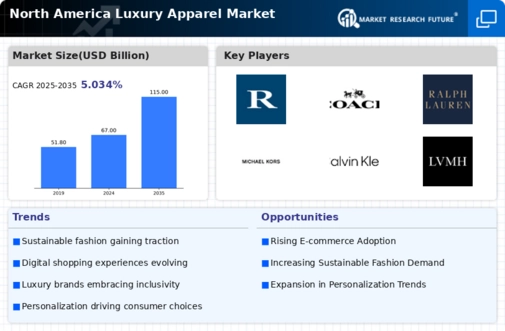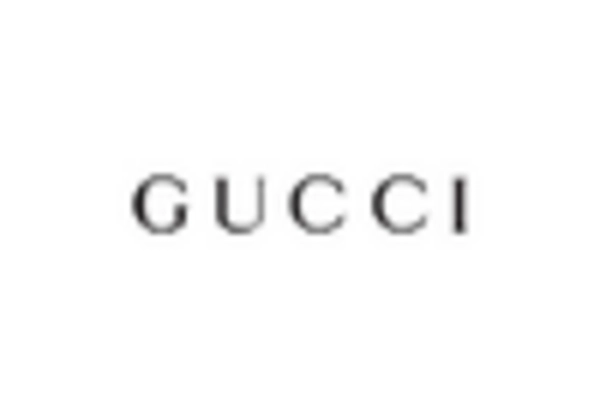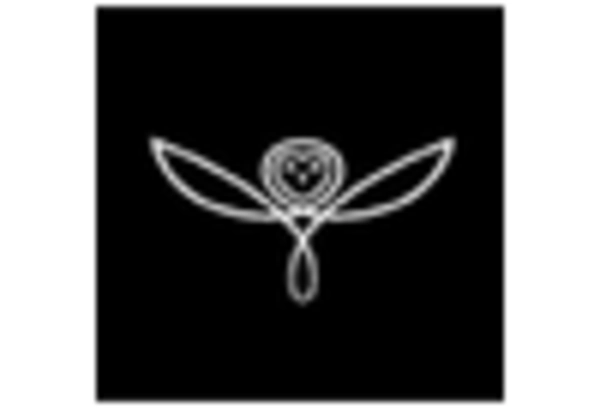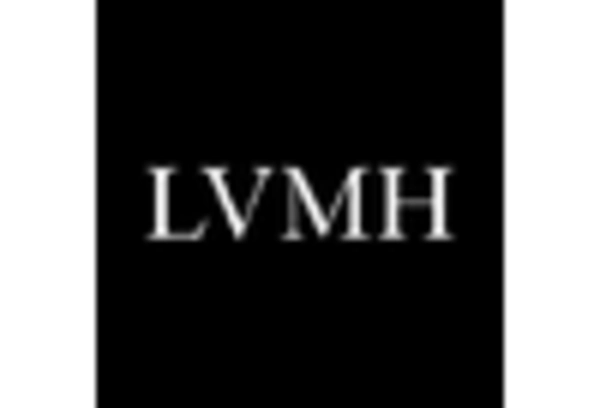The luxury apparel market in North America is characterized by a dynamic competitive landscape, driven by evolving consumer preferences and a growing emphasis on sustainability and digital engagement. Major players such as LVMH (FR), Kering (FR), and Gucci (IT) are strategically positioning themselves through innovation and regional expansion. LVMH (FR) continues to leverage its diverse portfolio, focusing on enhancing customer experiences through digital transformation, while Kering (FR) emphasizes sustainability in its operations, aiming to set industry standards. Gucci (IT), on the other hand, is known for its bold marketing strategies and collaborations, which resonate well with younger consumers, thereby shaping a competitive environment that prioritizes brand loyalty and consumer engagement.
Key business tactics within this market include localizing manufacturing and optimizing supply chains to enhance responsiveness to consumer demands. The competitive structure appears moderately fragmented, with several key players exerting substantial influence. This fragmentation allows for niche brands to thrive alongside established luxury houses, creating a rich tapestry of offerings that cater to diverse consumer segments.
In October 2025, Kering (FR) announced a partnership with a leading tech firm to develop an AI-driven platform aimed at personalizing the shopping experience for consumers. This strategic move is likely to enhance customer engagement and streamline operations, positioning Kering (FR) at the forefront of digital innovation in luxury retail. The integration of AI technology could potentially redefine how consumers interact with luxury brands, making the shopping experience more tailored and efficient.
In September 2025, Gucci (IT) launched a new sustainability initiative focused on circular fashion, which includes a take-back program for used garments. This initiative not only aligns with the growing consumer demand for sustainable practices but also reinforces Gucci's commitment to environmental responsibility. By promoting circularity, Gucci (IT) is likely to attract eco-conscious consumers, thereby enhancing its brand image and market share.
In August 2025, LVMH (FR) expanded its presence in the North American market by opening a flagship store in New York City, showcasing its latest collections. This expansion reflects LVMH's strategy to enhance brand visibility and accessibility in key markets. The flagship store is expected to serve as a hub for exclusive events and personalized services, further solidifying LVMH's position as a leader in luxury retail.
As of November 2025, current trends in the luxury apparel market indicate a strong focus on digitalization, sustainability, and the integration of advanced technologies such as AI. Strategic alliances are increasingly shaping the competitive landscape, allowing brands to leverage shared resources and expertise. Moving forward, competitive differentiation is likely to evolve from traditional price-based competition to a focus on innovation, technology, and supply chain reliability. This shift suggests that brands that prioritize these elements will be better positioned to thrive in an increasingly competitive environment.


















Leave a Comment